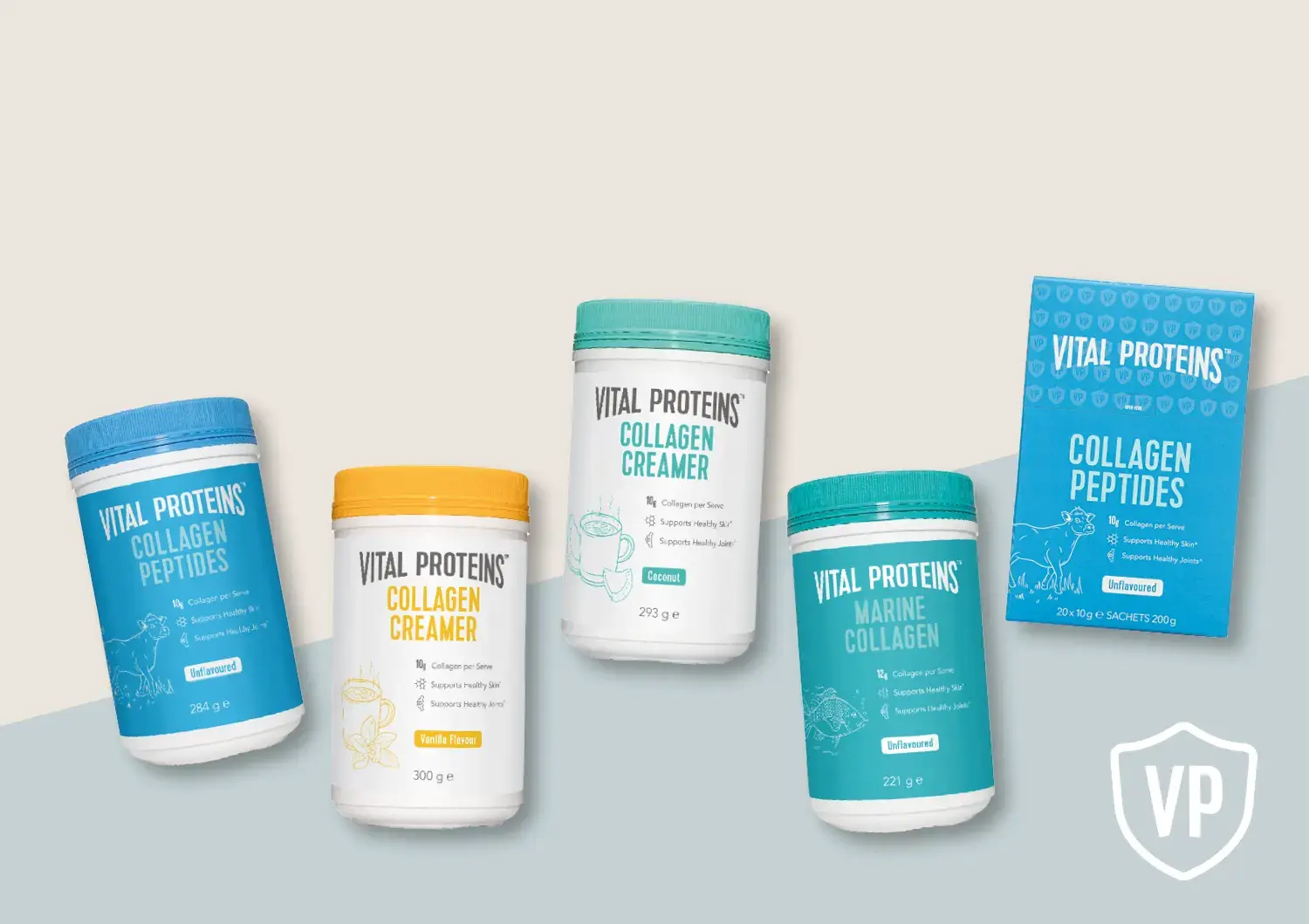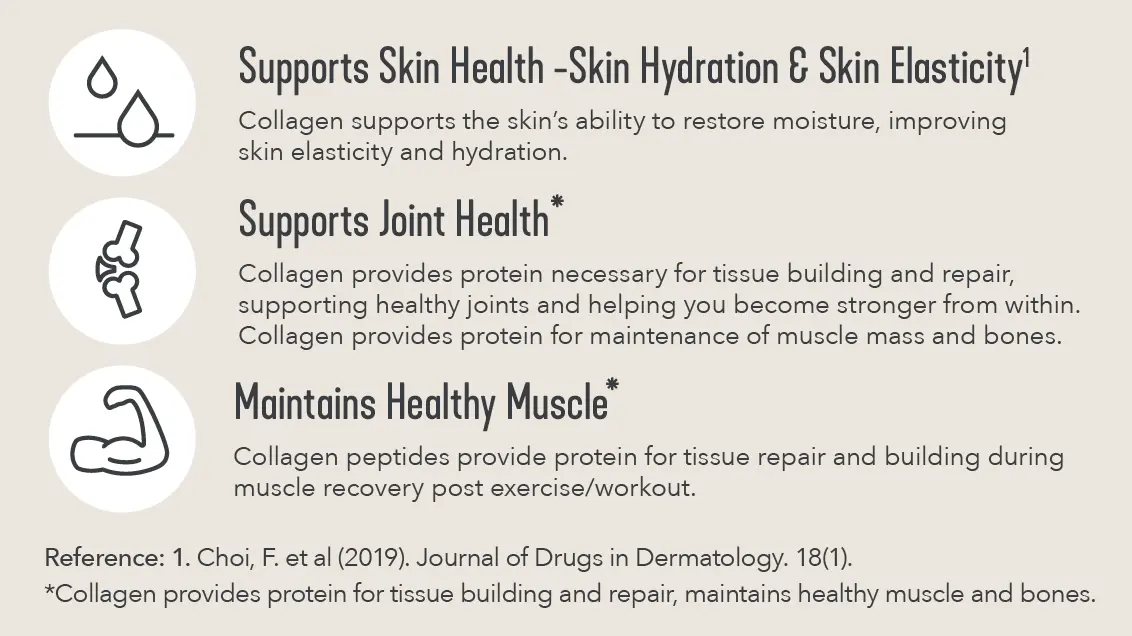Buy Vital Proteins Collagen Products | healthylife
Vital Proteins®


Now available in Australia
We know that feeling your best, looking your best and performing your best all starts from the inside out. Wellness is a journey and our brand mission at VITAL PROTEINS is to show that wellness is vital.
VITAL PROTEINS is a collagen focused brand that provides you with a way to boost your collagen intake and, in addition to a healthy diet and exercise regime, help to support healthy skin, joints and muscles.
Try VITAL PROTEINS high quality hydrolysed collagen peptides. It’s easy to make it a part of your daily routine, any time of the day. Simply add to your favourite drink, hot or cold, such as coffee, tea or smoothie, you can even put it into your favourite recipe.
Choose from our single ingredient bovine or marine collagen or try our great tasting creamers. Our creamers will add flavour and creaminess to your coffee, tea or smoothie!
Consume VITAL PROTEINS Collagen as a source of protein and part of a healthy balanced diet containing a variety of foods.
Easy as 1, 2, 3!
The benefits of collagen
Collagen is the most abundant protein in our body (1), and provides the structural framework that holds everything together, helping to support the health and integrity of our body’s tissues, especially in our muscles, tendons, bones, joints and skin.
Collagen helps provide protein necessary for building and repairing connective tissues, tendons, and ligaments, supporting our muscle tissues to regenerate, as well as improving our skin’s elasticity and hydration. As we get older, our body becomes less efficient at producing collagen (2).
Introduce ingestible collagen to your diet with VITAL PROTEINS, to help you look and feel your best!

Vital Proteins products available at healthylife
Consume VITAL PROTEINS Collagen as a source of protein and part of a healthy balanced diet containing a variety of foods.
References
- ScienceDirect, Volume 277, Issue 6, 8 February 2002, Pages 4223-4231
- Ganceviciene, R. (2012). Dermatoendocrinol. 2012; 4(3): 308-319
